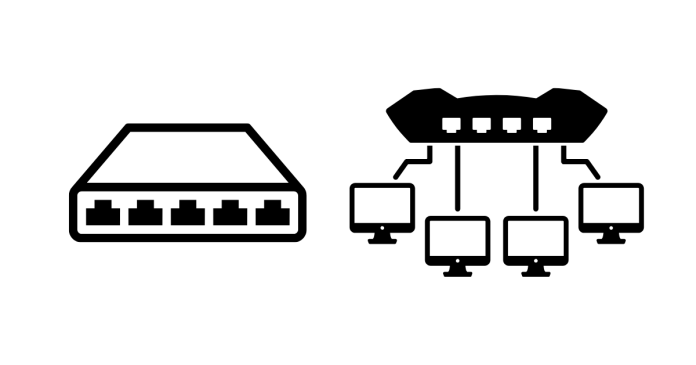A network hub is a basic networking device that connects multiple computers or devices in a network and enables communication between them. It operates at the physical layer (Layer 1) of the OSI (Open Systems Interconnection) model and is primarily used in small networks.
Unlike switches or routers, hubs do not filter or direct data; they simply broadcast it to all connected devices.
How Does a Network Hub Work?
- Connection:
- Devices like computers, printers, or servers are connected to the hub using Ethernet cables.
- Data Transmission:
- When one device sends data, the hub receives it and broadcasts the data to all connected devices, regardless of the intended recipient.
- No Filtering or Routing:
- The hub does not analyze the data packets or know where they are intended to go. This can lead to unnecessary data transmission across the network.
- Half-Duplex Communication:
- Hubs allow only one device to send data at a time. If multiple devices try to send data simultaneously, a collision occurs, and the hub must resend the data.
Types of Network Hubs
- Active Hub:
- Requires external power and can amplify or regenerate signals to maintain data integrity over long distances.
- Example: Used in larger networks to prevent signal degradation.
- Passive Hub:
- Does not require power and simply distributes the signal to all devices without amplification.
- Example: Used in small networks or simple setups.
- Intelligent Hub:
- Includes management capabilities to monitor network traffic and detect issues.
- Example: Found in more advanced networks with basic diagnostic features.
Advantages of a Network Hub
- Simple to Use: Easy to set up and requires minimal configuration.
- Cost-Effective: Cheaper than switches or routers.
- Suitable for Small Networks: Ideal for basic networking needs.
Disadvantages of a Network Hub
- Inefficient Data Transmission: Broadcasts data to all devices, which can cause unnecessary network congestion.
- No Security Features: Cannot filter or block unauthorized data packets.
- Collision-Prone: Half-duplex communication can lead to data collisions in busy networks.
- Limited Scalability: Not suitable for larger or high-performance networks.
Hub vs. Switch vs. Router
| Feature | Hub | Switch | Router |
|---|---|---|---|
| OSI Layer | Physical Layer (Layer 1) | Data Link Layer (Layer 2) | Network Layer (Layer 3) |
| Data Direction | Broadcasts to all | Directs to specific device | Routes data between networks |
| Efficiency | Low | High | Very High |
| Collision Domain | One | Per Port | None |
When to Use a Network Hub
- In very small networks with limited devices.
- For temporary setups or testing purposes.
- When cost is a significant concern.
Limitations and Modern Usage
Hubs are largely obsolete and have been replaced by network switches and routers, which provide more efficiency, security, and scalability. However, they may still be used in niche applications or low-budget environments.


